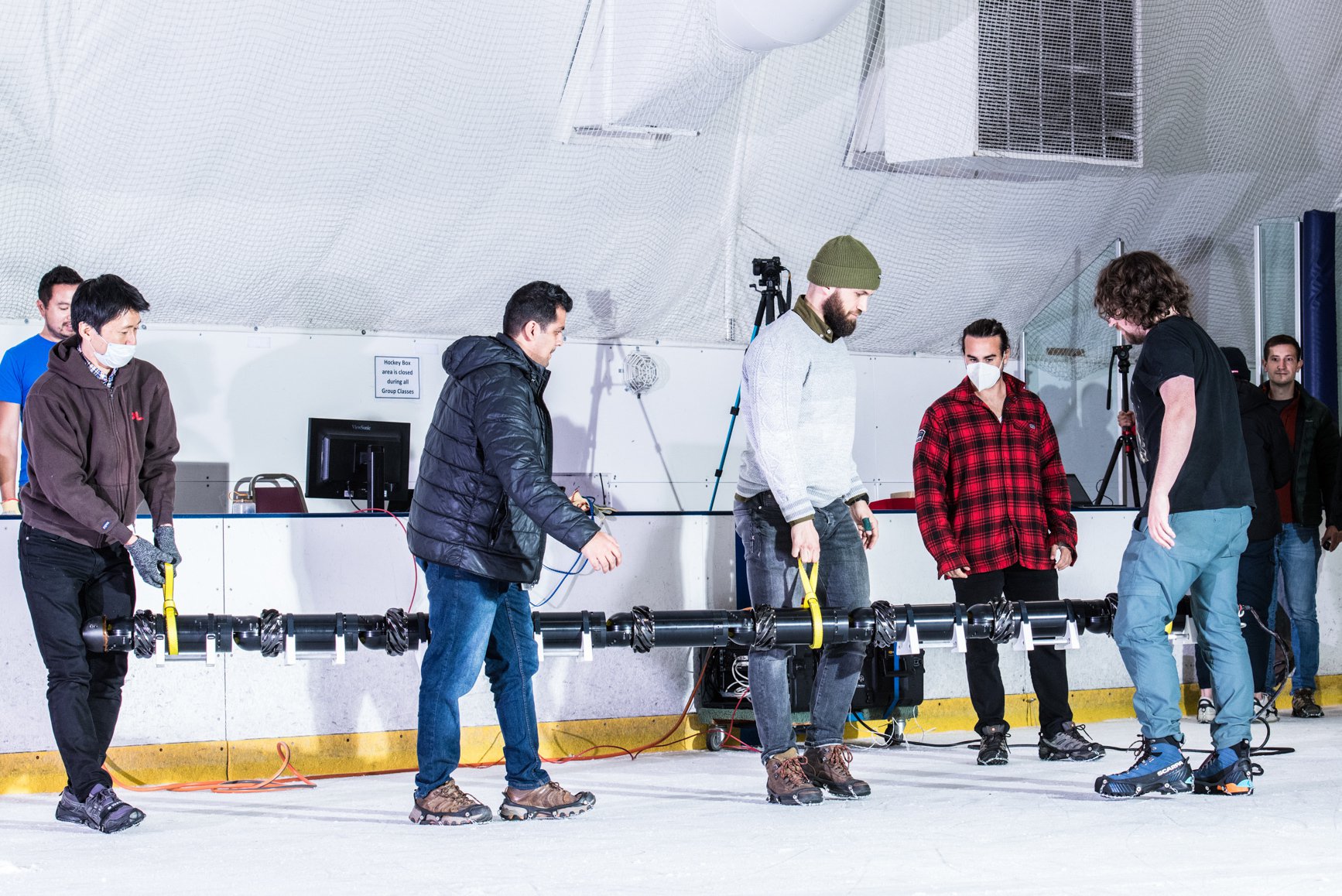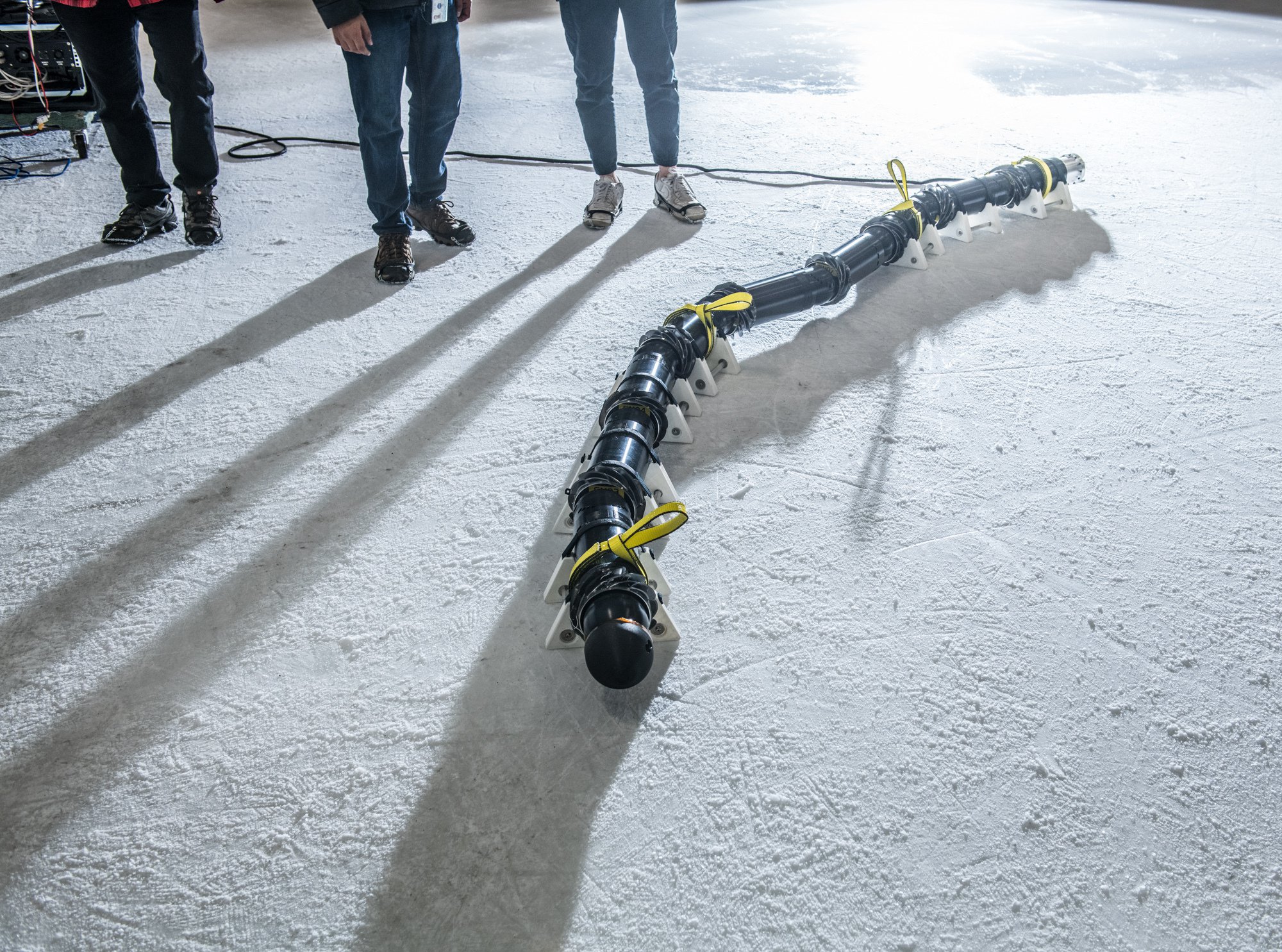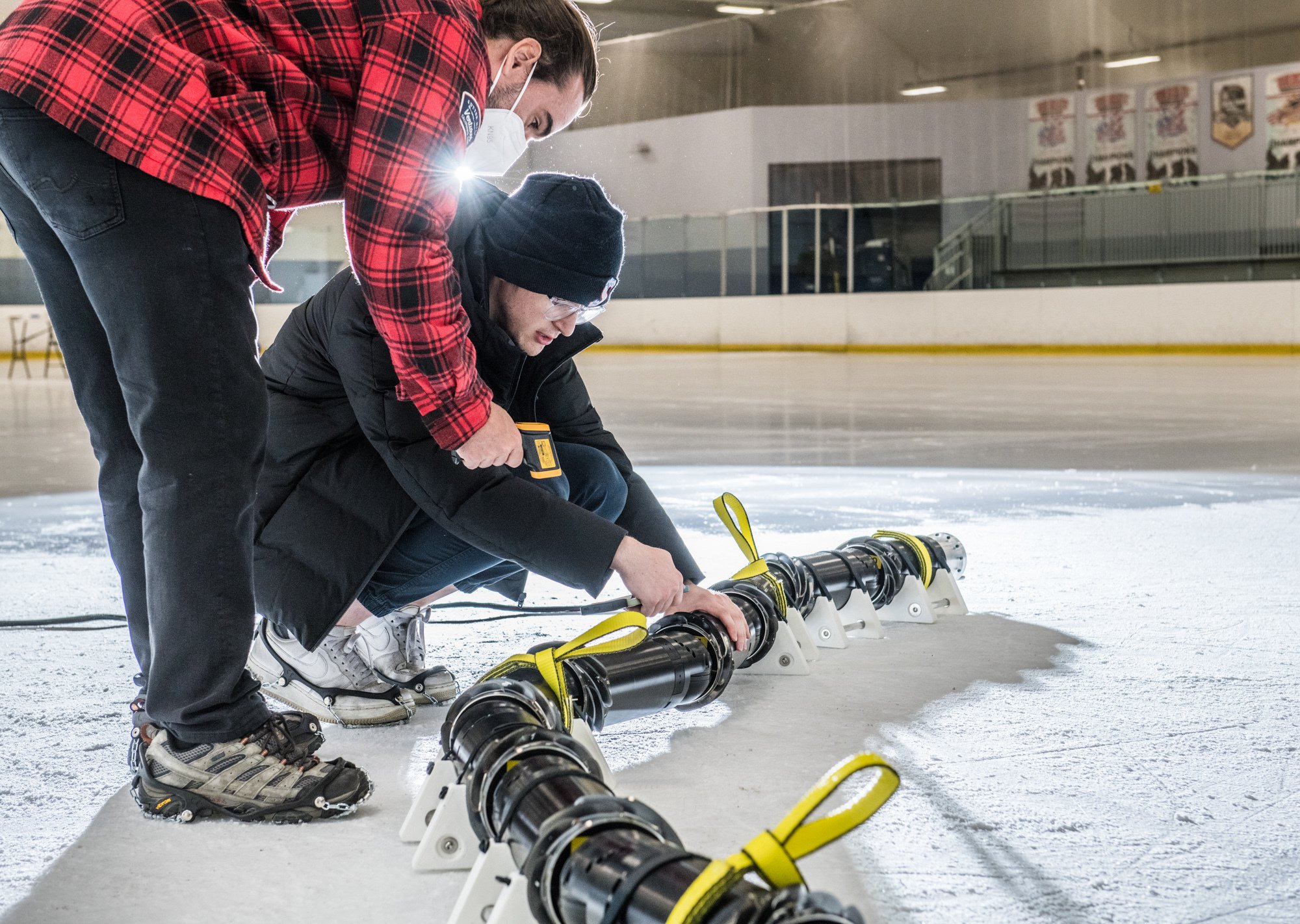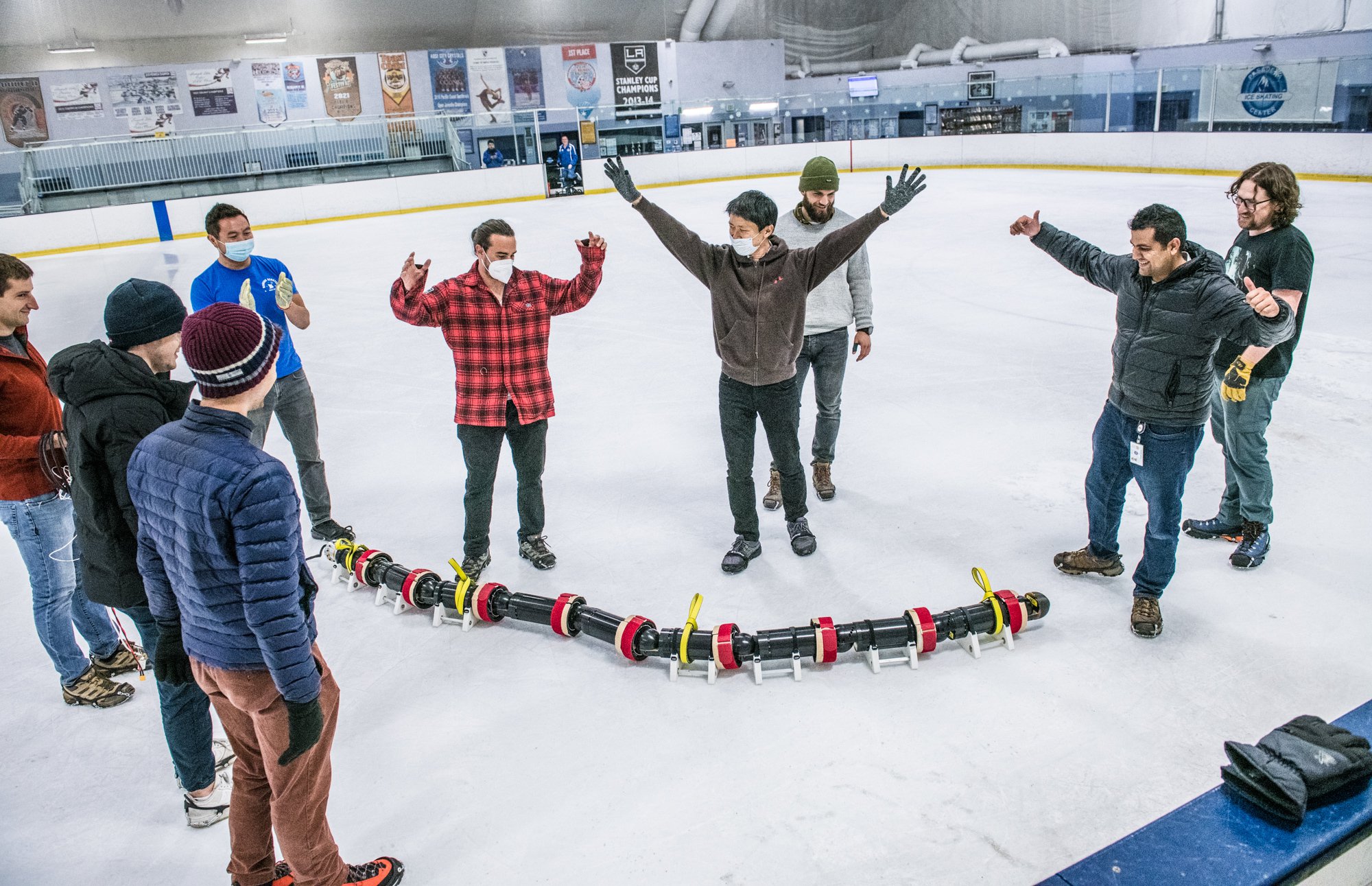

The EELS system is a mobile instrument platform conceived to explore internal terrain structures, assess habitability and ultimately search for evidence of life. It is designed to be adaptable to traverse ocean-world-inspired terrain, fluidized media, enclosed labyrinthian environments and liquids.
Science Objective
Cassini data indicates that Enceladus has a liquid ocean under its icy crust. The plumes erupting from its surface are conduits directly to liquid water, potentially making this the easiest path to a habitable liquid ocean. There are many hypothesized environmental conditions informed by proposed crevasse eruption models. These crevasse envelopes have driven every aspect of the EELS architecture to make it adaptable to the challenges it may face on this journey from the surface to the ocean. The adaptability of the system opens other destinations such as Martian polar caps, and descending crevasses in ice sheets on Earth. The current effort includes working with earth scientists to identify high-priority, high-impact terrestrial scientific investigations that will also demonstrate the capabilities of EELS in a planetary analogue environment.
EELS Architecture
The EELS architecture is a snake-like, self-propelled robot and made of multiple, identical, segments containing both the actuation and propulsion mechanisms as well as the power and communication electronics to drive them. EELS uses first-of-a-kind rotating propulsion units that act as tracks, gripping mechanisms and propeller units underwater, enabling the robot to access a plume vent exit and follow it to its ocean source.
Capability
A mobility system designed to explore internal and enclosed dynamic terrain structures in order to assess habitability and evidence for life.
Benefit
This system can further Ocean World exploration by its diverse adaptability to various types of terrains. EELS allows for deeper exploration into areas that were once unattainable.

EELS team members, Masahiro Ono, Rohan Thakker, Marlin Strub, Phillipe Tosi and Michael Paton carry the 9-link EELS robot to the ice at the Pasadena Ice Rink. Credit NASA/JPL-CalTech

The first EELS prototype awaits testing at the Pasadena Ice Rink. Credit NASA/JPL-CalTech

EELS Team members, Peter Gavrilov and Phillipe Tosi take measurements in advance of the first overnight test at the Pasadena Ice Rink. Credit NASA/JPL-CalTech

Members of JPL’s EELS team celebrate the robot’s first field test at an ice rink in Pasadena, California, in July 2022. Principal investigator Hiro Ono is just right of center, in the brown sweatshirt. Credit NASA/JPL-Caltech.
Download EELS Technical Specification here.
Point of Contact:
Masahiro (Hiro) Ono, PI, Masahiro.Ono@jpl.nasa.gov
Matthew Robinson, Project Manager, Matthew.L.Robinson@jpl.nasa.gov
Rachel Etheredge, Deputy Project Manager, rachel.k.etheredge@jpl.nasa.gov
Sponsored By: JPL Internal Research Programs funded